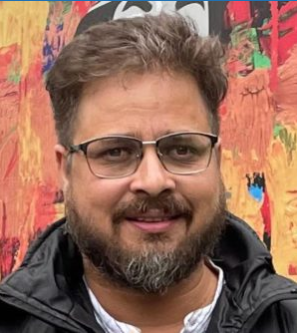The picturesque state of Goa, renowned for its stunning beaches, vibrant nightlife, and rich cultural heritage, has once again become a focal point in the discussion on tourism in India. Recently, Tourism Minister Rohan Khaunte stepped forward to address what he termed as “false propaganda” circulating on social media regarding a decline in foreign tourist arrivals. His statements, made during a press conference, emphasize that not only has Goa maintained its attractiveness as a tourist destination, but it has also surpassed previous years in terms of foreign tourist arrivals.
Minister Khaunte assured the public that all pertinent documentation to support this claim has been formally presented in the assembly, reinforcing the government’s commitment to transparency and accountability. The influx of tourists is vital for Goa, a state heavily reliant on the tourism sector for its economic stability and growth. As the state navigates the aftermath of the COVID-19 pandemic, the recovery of foreign tourism has become an essential part of its revitalization strategy.
The minister’s comments highlight an underlying issue: the responsibility of elected representatives, the media, and the public to communicate accurately about tourism dynamics. Khaunte cautioned against spreading misinformation, arguing that maintaining a unified front is crucial for showcasing Goa’s tourism potential. He poignantly remarked that, in times of national unity—such as during the India-Pakistan cricket match—Goans must come together to present a positive image of the state, especially in challenging times.
In recent months, differing opinions have emerged regarding the state’s tourism performance, with some arguing that the aftershocks of the pandemic still linger. However, of significance is Khaunte’s assertion that the decline in foreign tourist arrivals is not reflective of the situation on the ground. Instead, he insists that Goa remains as appealing as ever to international visitors, attracting travelers eager to experience the unique blend of relaxation and adventure that the state offers.
The assertion that Goa’s tourism industry is bouncing back provides a much-needed dose of optimism. However, it raises questions about the role played by critics and detractors in shaping the narrative surrounding tourism in the region. Particularly in the digital age, where social media can amplify both truth and misinformation, it is critical for all stakeholders—including government representatives and the media—to engage responsibly in dialogue concerning the economy and tourism.
Rohan Khaunte’s call for unity reflects a deeper understanding of the challenges faced by the tourism industry. It’s not just about statistics; it’s about the sentiments of local businesses, hospitality workers, and the countless families who depend on the influx of visitors. The tourism sector’s recovery is a shared goal, and one that should transcend political lines and rivalries.
As Goa moves forward, it is essential for all parties involved to foster a collaborative environment that supports and nurtures the tourism industry. This means promoting accurate information and working together to lure visitors back to the state. Ultimately, the success of Goa’s tourism hinges not only on recovering numbers but also on the shared commitment of the entire community—politicians, business owners, and citizens alike—to protect and promote the beauty and charm that makes Goa a unique destination in the global travel landscape.


